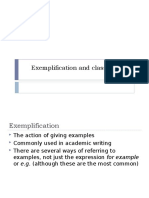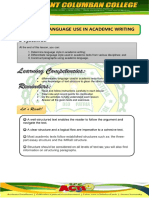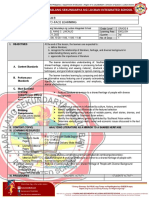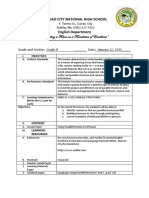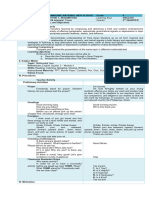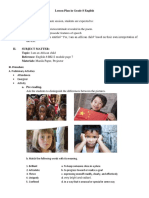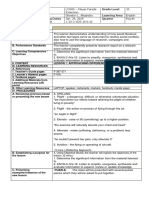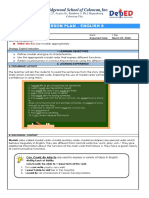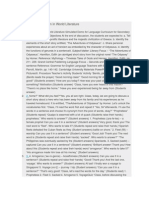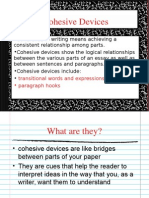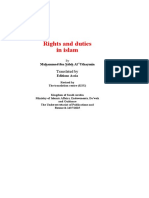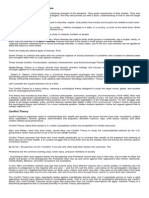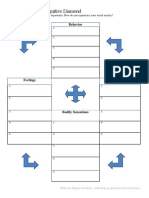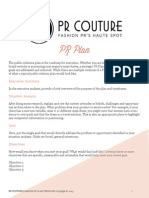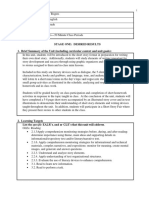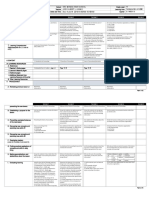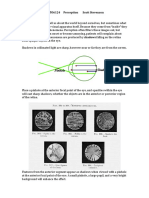0% found this document useful (0 votes)
156 views31 pagesTransitional Devices
The document discusses transitional and cohesive devices used in writing. It describes what they are, their functions, types, and how to use them to link sentences, paragraphs, and ideas for coherence and clarity.
Uploaded by
Precious Julia TolentinoCopyright
© © All Rights Reserved
We take content rights seriously. If you suspect this is your content, claim it here.
Available Formats
Download as PDF, TXT or read online on Scribd
0% found this document useful (0 votes)
156 views31 pagesTransitional Devices
The document discusses transitional and cohesive devices used in writing. It describes what they are, their functions, types, and how to use them to link sentences, paragraphs, and ideas for coherence and clarity.
Uploaded by
Precious Julia TolentinoCopyright
© © All Rights Reserved
We take content rights seriously. If you suspect this is your content, claim it here.
Available Formats
Download as PDF, TXT or read online on Scribd
/ 31
